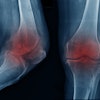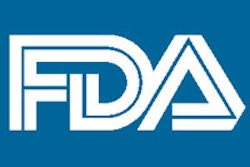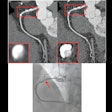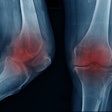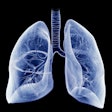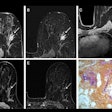Dear AuntMinnie Member,
If you've been wondering who is in the running for a prestigious Minnies award, wonder no more -- the list of Minnies semifinalists is now available!
We've taken your nominations to compile a list of 207 candidates in 14 categories, ranging from Most Influential Radiology Researcher to Best Radiology Mobile App. Along the way you'll also find categories such as Scientific Paper of the Year, Hottest Clinical Procedure, and Biggest Threat to Radiology.
What happens next? In the coming weeks, our expert panel of radiology luminaries will vote on the candidates, coming up with two finalists in each category. The finalists will then face off in a final round of voting, with winners announced in time for the RSNA 2015 meeting in Chicago.
So check out the Minnies candidates at minnies.auntminnie.com. And if you see a colleague listed as one of the semifinalists, be sure to give him or her a shoutout.
We are also repeating our popular Best Radiology Image competition from last year, which gives you the opportunity to vote for your favorite image by liking it on our Facebook page. The winner will be the image that gets the most "likes" from our members.
Thanks to everyone for your nominations!
FDA gadolinium probe
In other news, the U.S. Food and Drug Administration (FDA) is once again investigating the safety of gadolinium-based contrast agents (GBCAs).
This time, the agency is examining studies that have found gadolinium deposits in the brains of individuals who received the MRI contrast agents; in some cases, these deposits persisted for years after the scans.
The probe comes eight years after the FDA's last investigation of gadolinium contrast, which followed reported cases of nephrogenic systemic fibrosis (NSF) in patients with renal insufficiency. While NSF has largely been eliminated since then by restricting GBCA use, this new issue presents a potentially thornier dilemma.
For one thing, no one is even sure that the gadolinium deposits represent a safety threat to patients. Also, questions continue to circulate as to whether some gadolinium agents have different effects than others.
Learn more about this developing story by clicking here, or visit our MRI Community at mri.auntminnie.com.
Kopans on DCIS study
Some controversies never seem to die. Unfortunately, breast screening is one of those issues.
The latest imbroglio concerns a study published in JAMA Oncology last week on ductal carcinoma in situ (DCIS) -- namely, whether these lesions represent an early form of cancer that should be treated immediately, or if they are better managed with surveillance.
The JAMA Oncology paper and an accompanying editorial generated significant media attention by claiming that DCIS is being managed too aggressively. But Dr. Daniel Kopans of Massachusetts General Hospital begs to differ: He offers a critique of the paper in our Women's Imaging Community, which you can read by clicking here.

